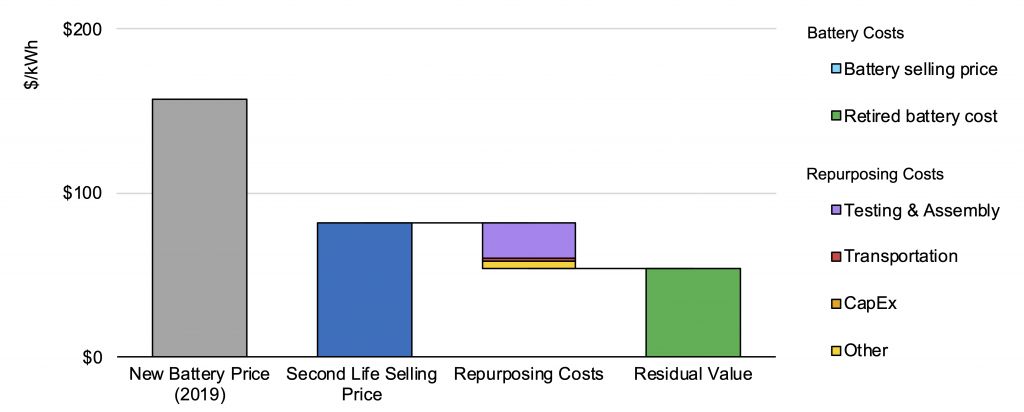When an electric vehicle (EV) comes off the road, what happens to the vehicle battery? The fate of the lithium-ion batteries in electric vehicles is an important question for manufacturers, policy makers, and EV owners alike
After 8 to 12 years in a vehicle, the lithium batteries used in EVs are likely to retain more than two thirds of their usable energy storage. At this point, it would no longer be suitable for powering an EV but the battery would still be suitable for being recycled into a plethora of “secondary” uses – broadly, either being re-used in a different context (such as for energy storage, powering fixed infrastructure such as street lights or lifts), or the materials within the batteries being recycled.
As the market for electric vehicles grows, so too will the supply of second-life batteries. Forecasts from academic studies and industry reports estimate a range of 112–275 GWh per year of second-life batteries becoming available by 2030 globally. For context, this is over 200 times total energy storage installed in the US in 2018.
The economic potential for battery reuse, or “second life,” could help to further decrease the upfront costs of EV batteries and increase the value of a used EV. Given the growing market for EVs, second-life batteries could also represent a market of low-cost storage for utilities and electricity consumers.
